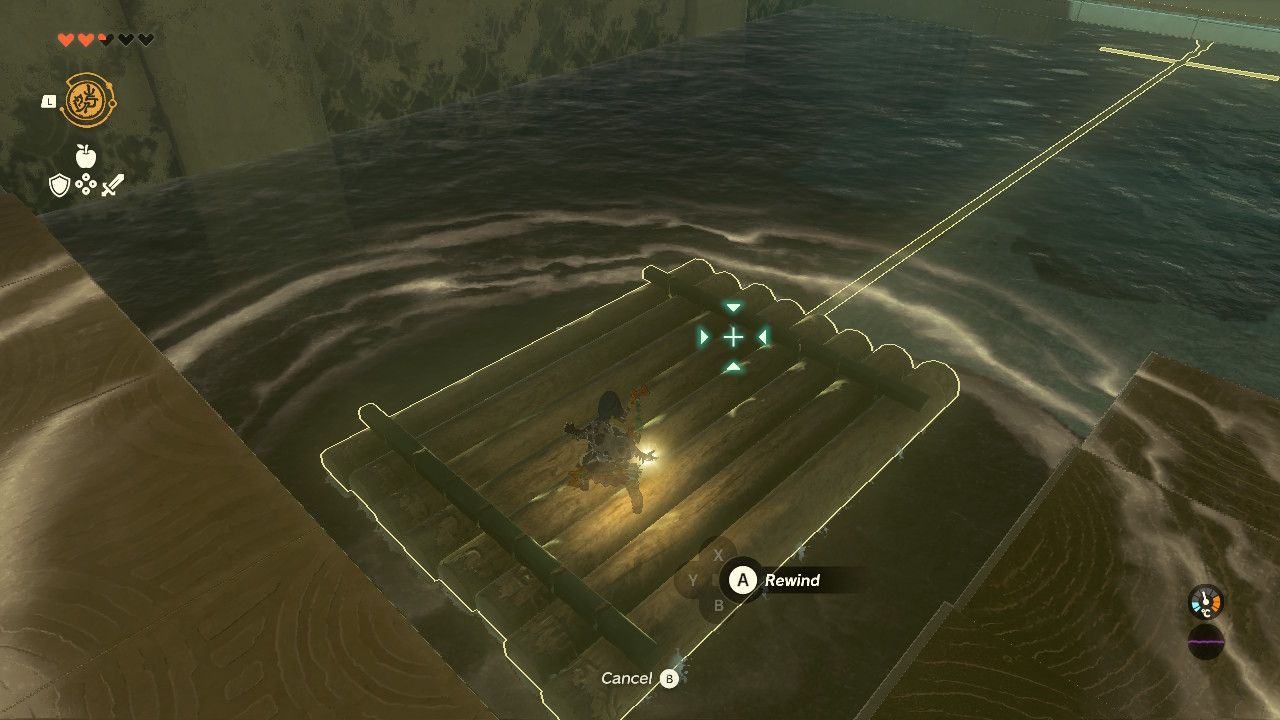Everyone will play Tears of the Kingdom a little differently. Some will rush through the story and explore later on, others will travel widely across Hyrule before getting down to business. Die hard Zelda fans will want to drink in every pixel, finding old friends and Easter Eggs, racking up hours into the triple figures. Newer players, or those who don't quite feel the series’ magic, will tread more cautiously, trying to find whatever it is about this game that speaks to so many others. And if you're a game dev, you might play it with sweat forming on your brow, knees trembling, and notice the seat of your pants suddenly feels much heavier. Much like Breath of the Wild before it, Tears of the Kingdom offers a transformative look at the future of game design, and many studios will follow in its footsteps. I only hope they don't get lost down the wrong path.
Breath of the Wild's main philosophy was 'go anywhere, do anything', and on a mechanical level, there were two tools that helped with this. First was the glider, which allowed relatively easy access to the map around you so long as you could climb high enough. The second was the stamina meter, which stopped you from being able to climb high enough. These two worked in tandem - BOTW's climbing offered freedom, no longer being restricted to scripted handholds or specific surfaces. However, in order for the game to still gate your progress a little bit, you couldn’t just climb the highest cliffs right from the beginning, instead earning your way up there.
Plenty of devs copied one or both of these mechanics in the six years since, but few understood them. Genshin Impact gave you a stamina meter and a 'go anywhere' world, but there was little of note in it. You could wander freely doing nothing, then get back to the major cities and continue the linear storyline. Likewise Horizon Forbidden West gave you a glider, but still restricted Aloy's climbing to specific walls that were daubed in paint and could only be interacted with in one way. Elden Ring is an example of a game that understands and iterates on Breath of the Wild's philosophy, and with how long triple-A games take to make more could be on the way. But mostly its ideas have been diced up and squandered.
Tears of the Kingdom is in even greater danger of that. My interpretation of Tears of the Kingdom's philosophy is that the world is your plaything. Exploration isn't quite as free as in Breath of the Wild, owing to the fact it largely uses the same map and thus fresh discoveries are no longer the allure. Instead, the world is free. While it doesn't look as glossy as a lot of other triple-As, Tears of the Kingdom is a hugely powerful game under the surface, with complex and confident physics that mean the world is alive. Truly alive, not an illusion.
A lot of the time when we talk about a world being alive and immersive, we mean characters who respond based on your actions, questlines or towns that change because of your actions, or other things generally happen because of your actions. It's all quite passive and reactive. What Tears of the Kingdom has going on is a system of interlocking physics, movement, and relationships which happen independent of you. Your actions can manipulate them, but it's most impressive because you can use Recall at any time. The world has been ready and waiting for you.
It's due to Recall, and the need for constant physics in motion, that the rest of the game works. That's why you can Ultrahand things together and have them connect and interact seamlessly. The person who made a working engine in the game might have been using Ultrahand, but the game itself was using Recall - every individual element of the game, each rock, device, part, and weapon has real and personalised physics, as does the environment. Recall needs these to exist in order to work, and Ultrahand is only effective because these systems underline it all. The problem is this is extremely difficult to do, and I'm not sure many other teams will do it.
Instead, the inspiration we'll see from Zelda is the ability to build things. That's what's getting all of the headlines. All we can talk about are the various contraptions (or Korok torture devices) we're all making. This is fun, but it's a cheap distraction. It's not what makes Tears of the Kingdom groundbreaking. It's not the act of building things, but the knowledge that you can, and that the game will reward you for it. It doesn't matter if you thought of something the devs didn't - it will still work, because each object behaves rationally on its own, meaning it can be combined in any combination you choose.
I expect we’ll see more building mechanics involved in games in the coming years, and that's not the worst thing that could happen. Gliding around in other games is fun, after all. Putting items together to make a silly little kart will be enjoyable too. But if games really want to capture the magic of Tears of the Kingdom that eats days of players' time and makes other devs sweat, the focus needs to be on the method, not the results.




